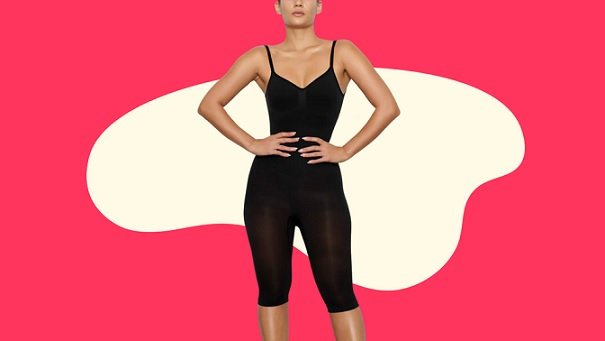To get the most out of your shapewear, look for breathable materials that allow air circulation to avoid overheating and discomfort. This ensures a comfortable, seamless wearing experience, especially for long periods.
Also, wash your shapewear in cold water with a gentle detergent. Doing so will prevent damage to your garment and help preserve its effectiveness.
Moisture-Wicking Fabrics
Moisture-wicking fabrics move sweat away from the skin, preventing it from penetrating the material’s outer surface. The fabric also dries quickly, keeping the skin feeling cool and dry. This is especially important because moisture promotes the growth of bacteria, which can cause chafing and other uncomfortable skin issues.
Moisture-wicking fabrics can be made from natural fibers or synthetic, artificial materials. They all use the same process, which relies on capillary action to draw moisture through tiny spaces within the fabric. Moisture-wicking fabrics have tiny holes or pores that are the perfect size to facilitate this, and brands can further optimize a fabric’s moisture-wicking properties by adjusting things like yarn twist, contact angle, knit or weave, yarn roughness, and more.
Moisture-wicking fabric is the best fabric for shape wear for anyone who wants to stay comfortable while exercising or doing other strenuous activities. It’s also a good idea to wear these fabrics when the weather is warm and humid since excessive sweating can lead to heat exhaustion or even hypothermia in extreme conditions.
Thermoforming
Thermoforming is a popular manufacturing process that creates products from thin plastic sheets. It can produce various goods, from automotive parts to medical equipment. It is also a great option for creating packaging and enclosures. In addition, it is possible to design a finished product with multiple components that fit together seamlessly, which reduces assembly time and increases quality.
The thermoforming process involves heating a plastic sheet until it becomes extremely flexible. Then, it is placed over a mold and forced into the shape of that mold. Vacuum forming is one of the most common types of thermoforming, while other forms include drape forming and twin sheet forming. These forms can create complex shapes with organic curves and detailed final products.
In addition, thermoforming allows manufacturers to use a wide range of materials. This includes traditional polymers and bioplastics from organic materials like corn or sugarcane. These bioplastics are more eco-friendly than conventional plastics and can be recycled at the end of their useful life.
Thermoforming is an extremely efficient and cost-effective manufacturing method. It produces prototypes in weeks, compared to months, for similar technologies and allows manufacturers to quickly modify designs without needing costly tooling changes. Thermoforming is also highly flexible, allowing designers to incorporate branding and other important details into the finished product.
Bonding
Aside from functionalities like reducing the appearance of lumps and bumps and improving posture, shapewear garments must also be comfortable and breathable. The choice of fabric and fabric technologies is important for this purpose. Among the most popular options are nylon, cotton, and lycra. These fabrics are lightweight, stretchy, and have a good fit.
The market for shapewear is growing because of several factors. For one, consumers are becoming more concerned with the appearance of their bodies and are looking for a quick fix to this concern. Shapewear can be more effective and affordable than dramatic lifestyle changes or expensive medical treatments.
Consumers are also increasingly demanding a variety of shapewear options and sizes. This is driving growth in the specialty stores segment of the market. These stores offer a wide selection of brands and styles of shapewear and provide a more specialized experience.
In addition, the use of technology and specialized fabric options can reduce or eliminate bulky seams and hems. This can help reduce the cost of production and shipping, as well as improve sustainability. Additionally, buyers are looking for a range of materials and finishes that can enhance the design and function of their shapewear products. They also want to reduce the amount of packaging used in their products. This can be an important consideration for European buyers trying to meet stringent sustainability requirements for their supply chains.
Fusing
Fusing is the process of sealing fabric together using heat and pressure. The result is a strong bond that resists stretching and tearing, and it’s also an affordable option for repairing worn garments. Fusing takes less time than sewing, so it’s a great way to save on labor costs.
It is important to know how to properly fuse fabrics before you attempt to sew them into your designs. Using the correct heat settings for your connecting materials is also important. If you have the iron set too high, it could melt or burn your fabrics. Alternatively, the heat setting may be too low and not activate the adhesive on the interfacing.
To avoid these issues, it’s best to test the fusing process on some scrap fabrics before you begin your project. You should also check the fusing instructions on the interfacing package to ensure that it is safe for your fabrics. Fusing is a useful technique for combining heavyweight and stiff materials, so it’s worth learning to do this correctly.
When sewing shapewear or girdles, the seams are incredibly tight and stretchy, so paying special attention to the fabric handling and fusing techniques is essential. Otherwise, you’ll be dealing with a lot of distortion and hot spots. Using the right methods will help to prevent this from happening so that your garments have a clean, professional look.
- Also, Read: Fashion: From Clothing to Designer Accessories
